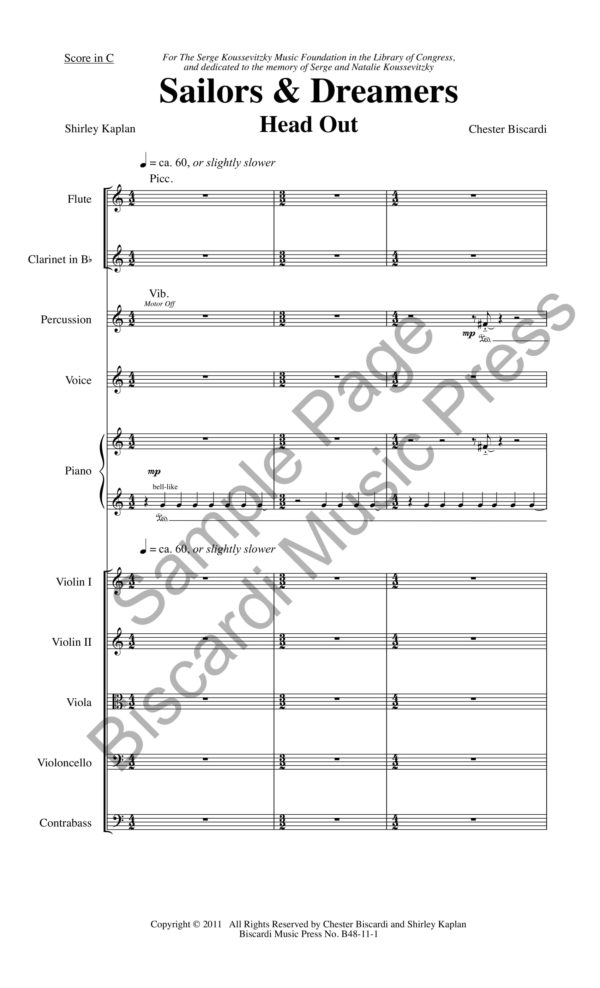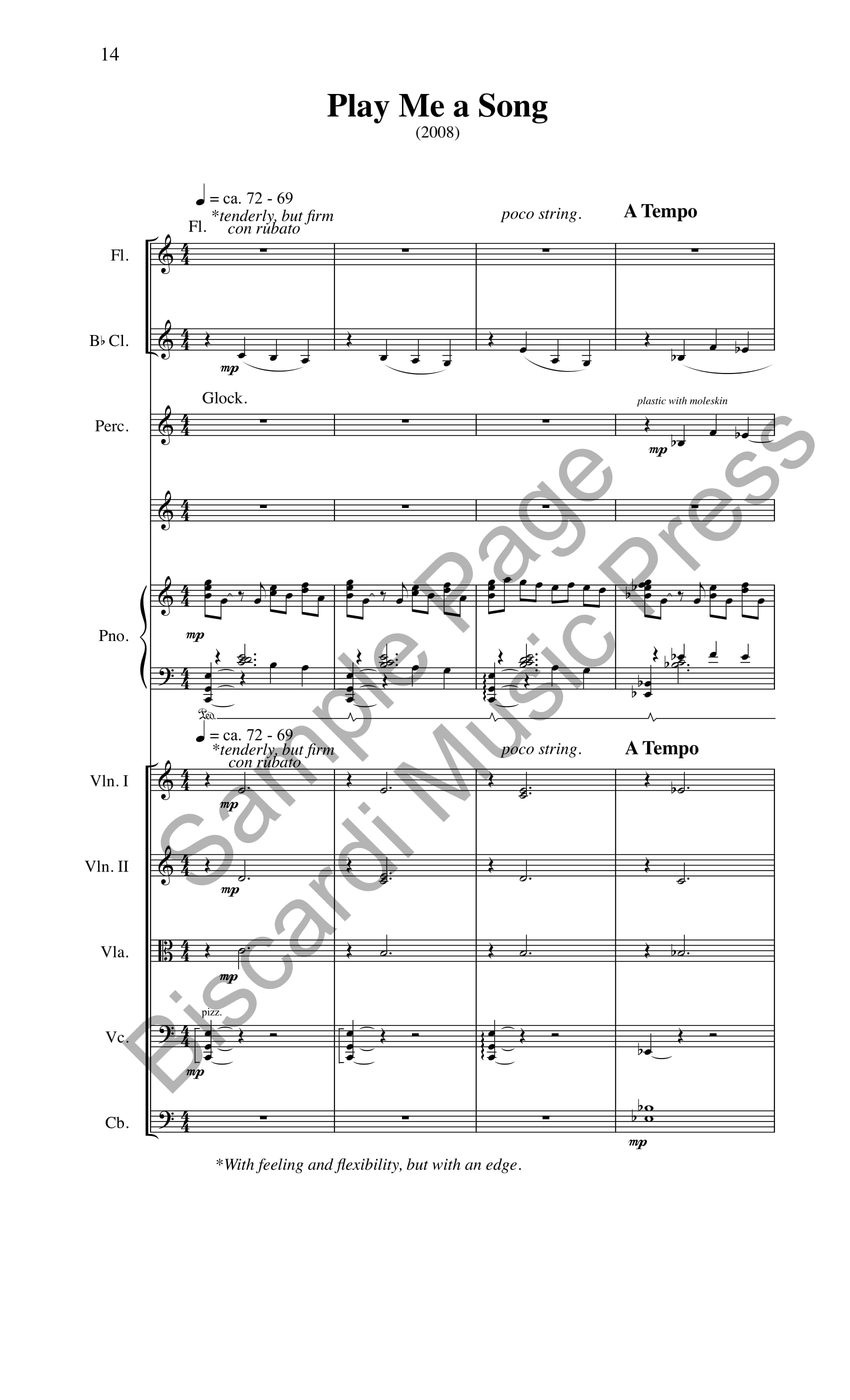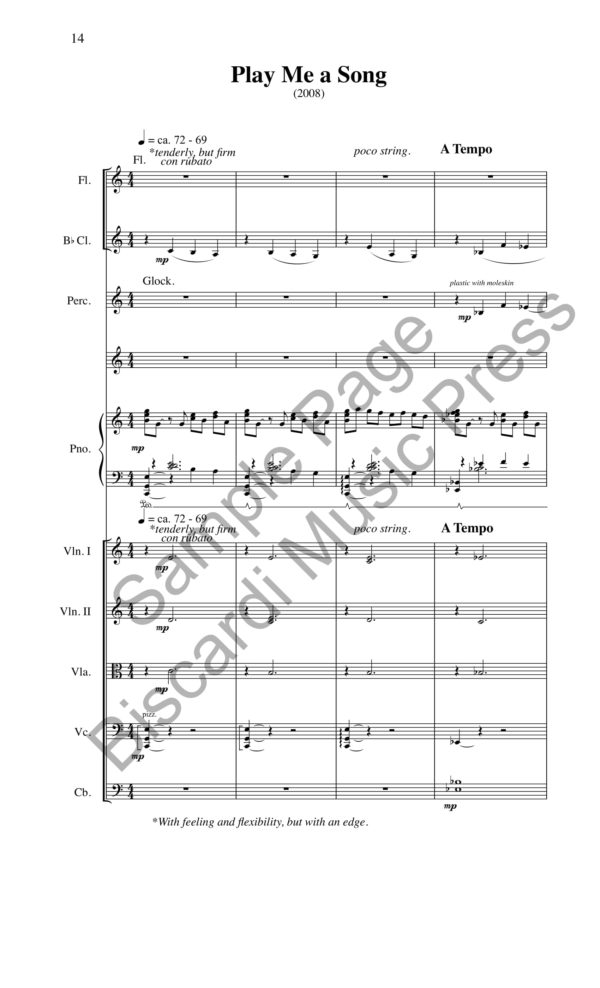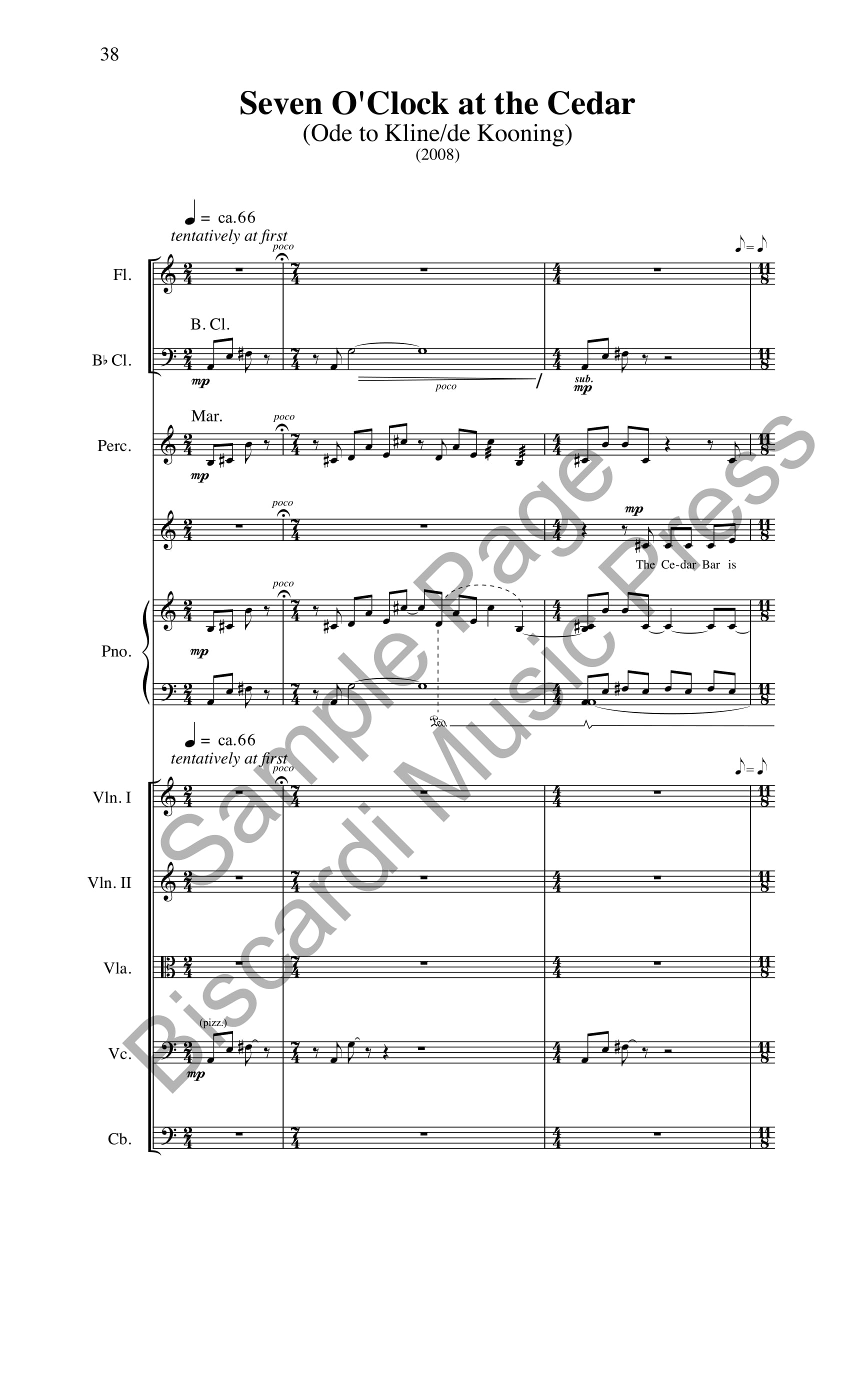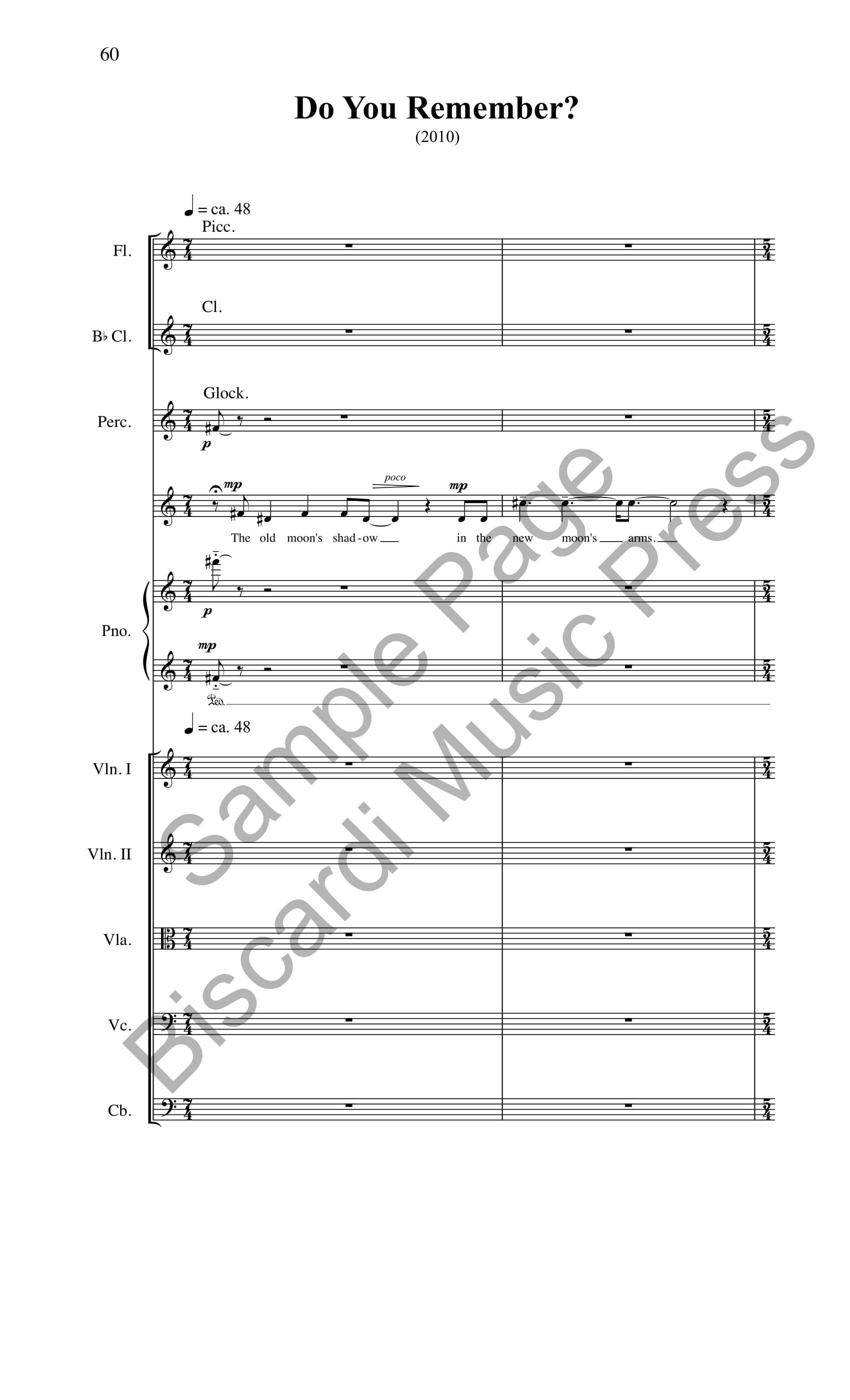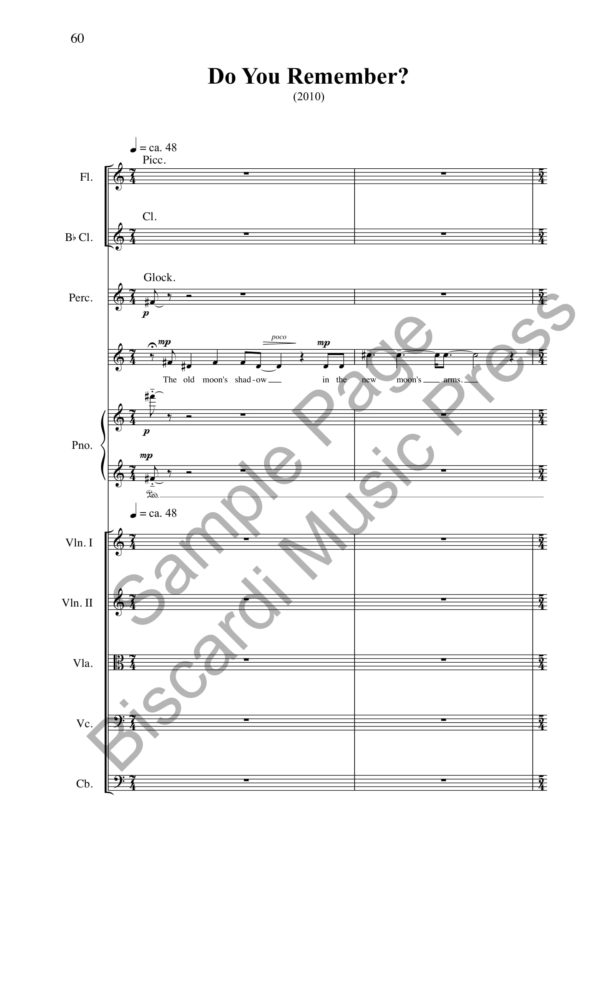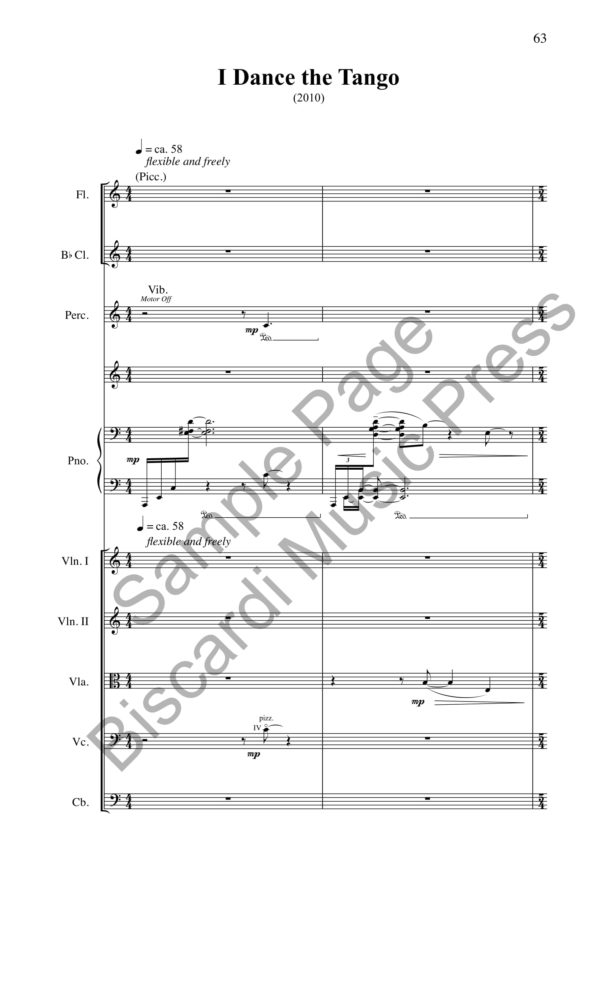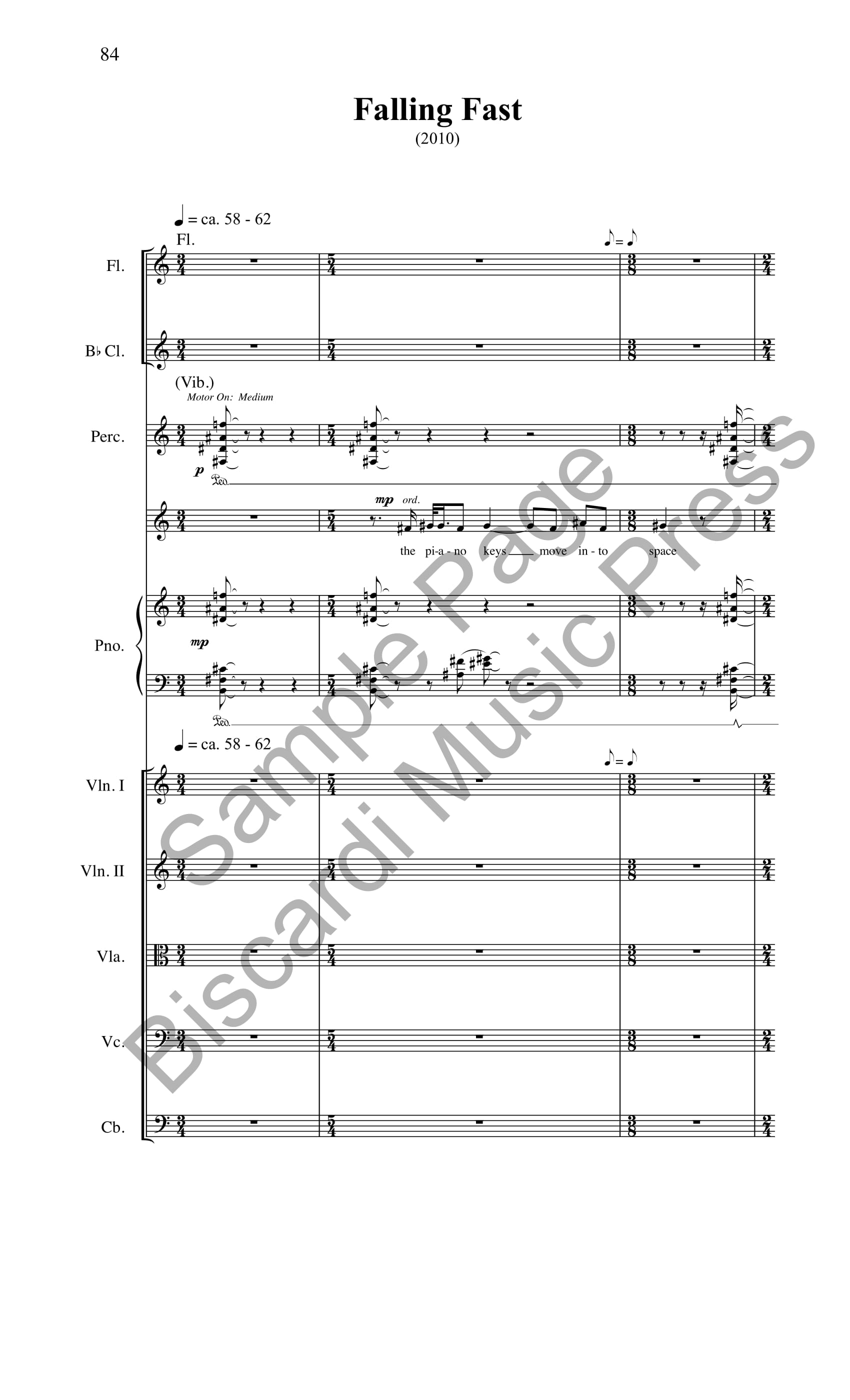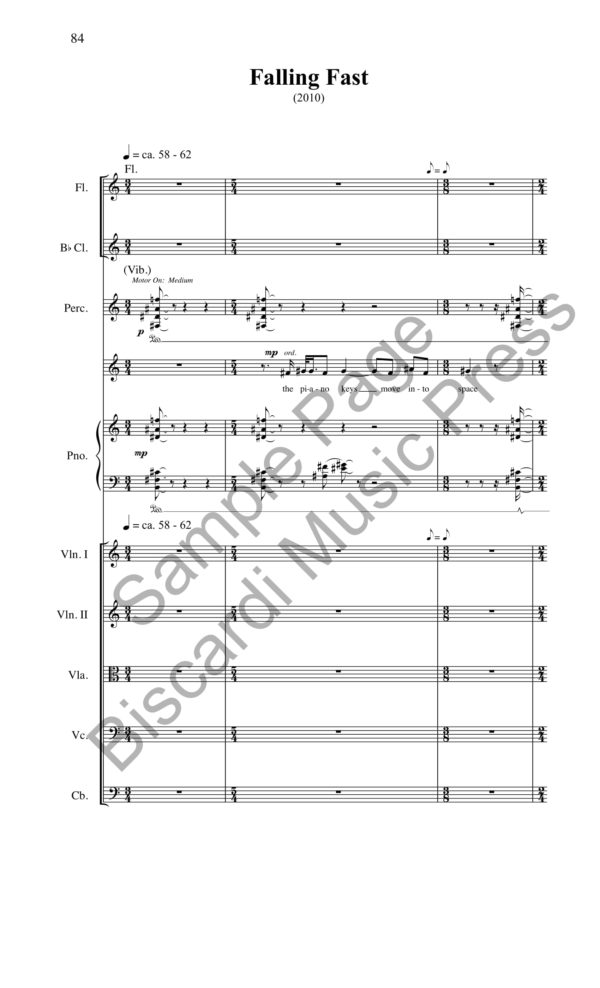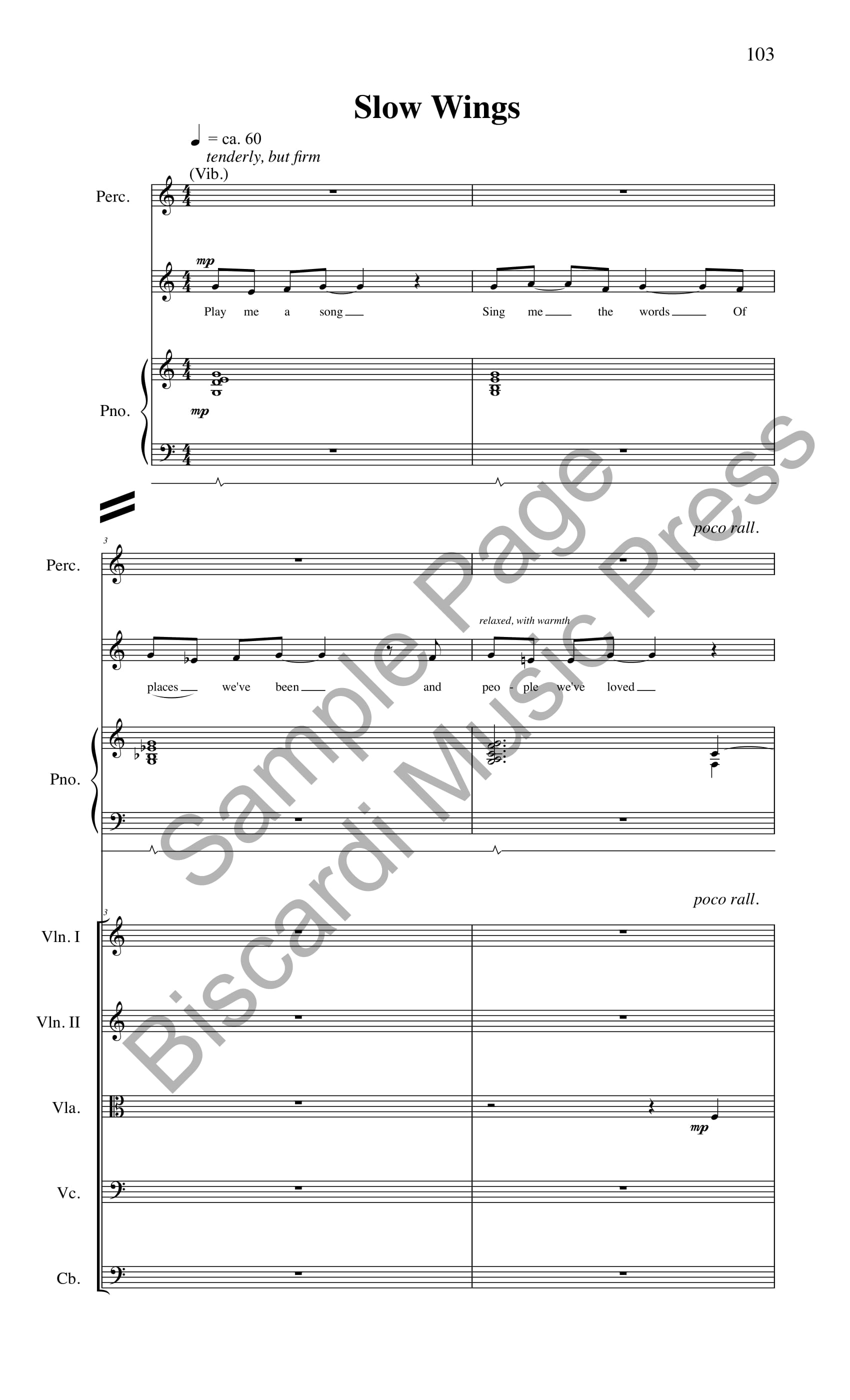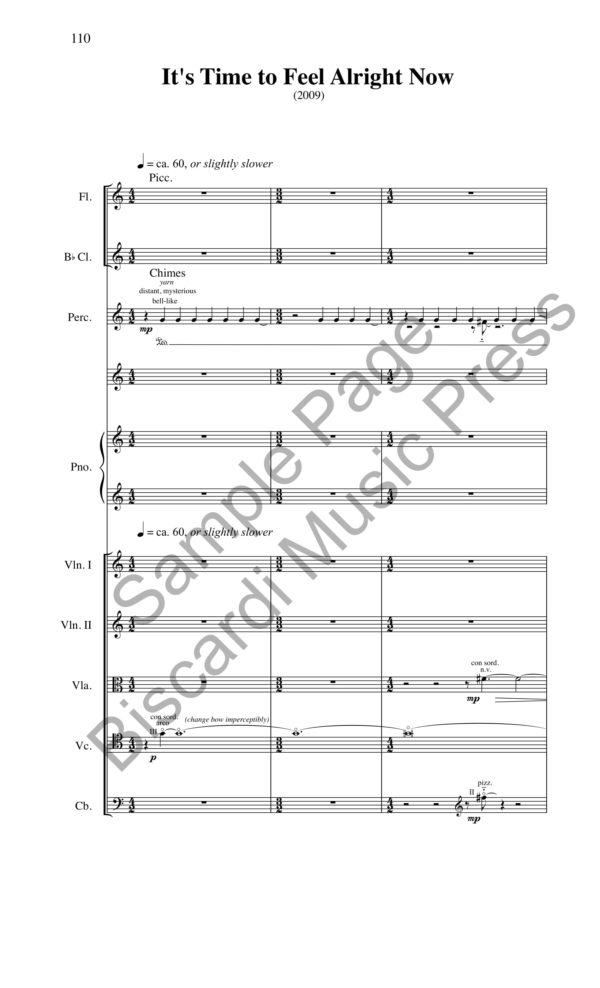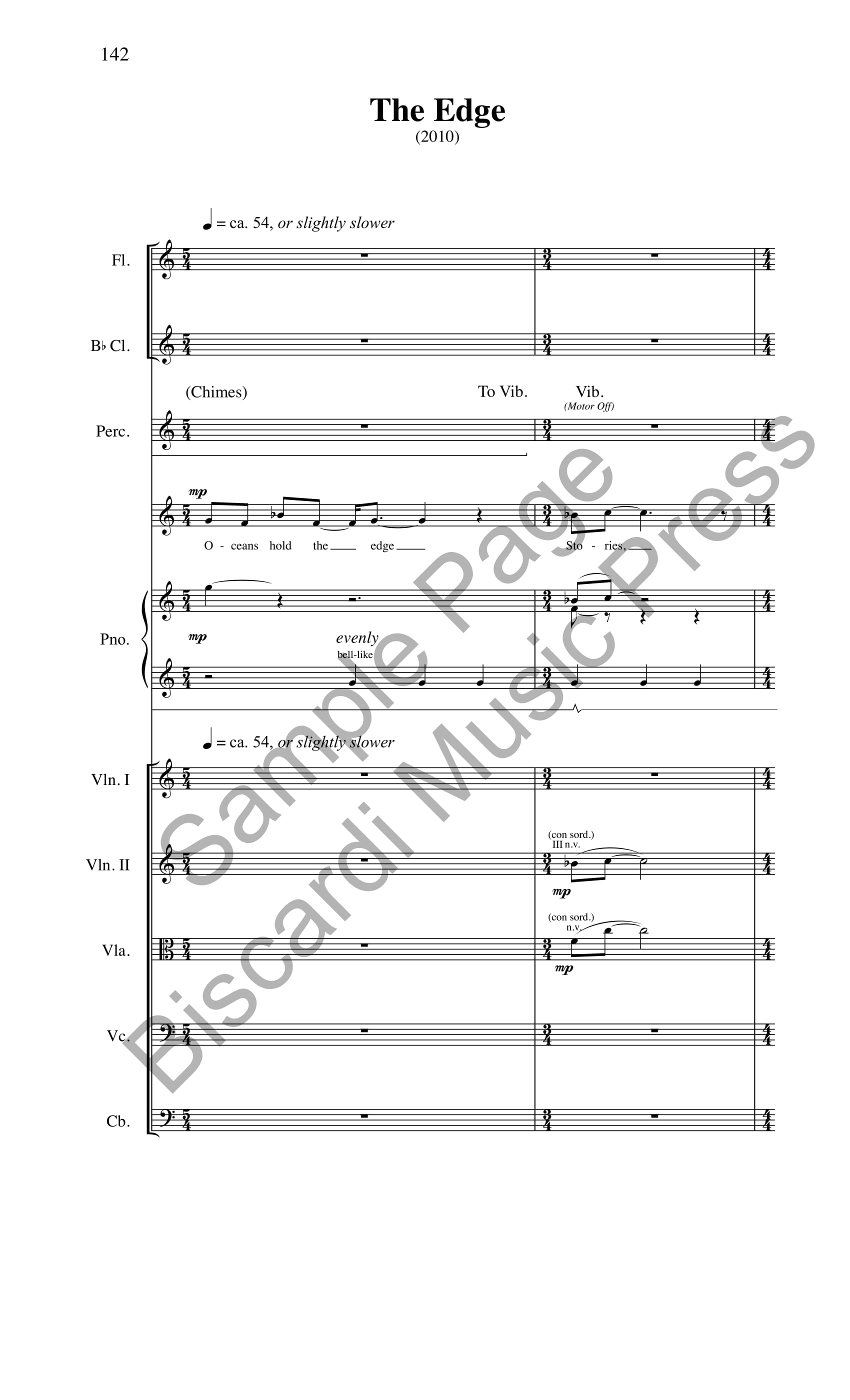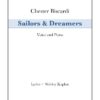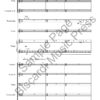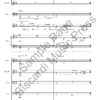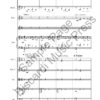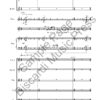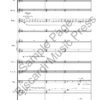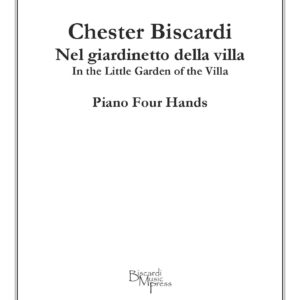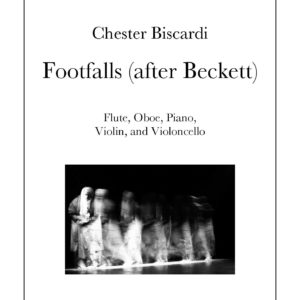Description
Premiere
World Premiere [Ensemble Version]
William Ferguson, voice
Sequitur
Paul Hostetter, conductor
19 September 2011
Merkin Concert Hall
New York City
World Premiere [Voice and Piano Version]
Dennis Tobenski, voice
Marc Peloquin, piano
9 October 2015
In Time's Unfolding: The Poetry of Chester Biscardi
Presented by KeyedUp Music Project
Tenri Cultural Institute
New York City
Instrumentation
Fl. (Picc.), Cl (B. Cl.), Perc. [Chimes (C4 - G5), Mar. (C3 - C7), Glock., Sus. Cyms. (Sm., Med. & Lg.), Vib.], Voice, Pn, Vln I, Vln II, Vla, Vc, Cb
Text
Lyrics by Shirley Kaplan
Vocal Range
Dedication
Dedicated to the memory of Serge and Natalie Koussevitzky, and written for Sequitur.
Commissioner
Commissioned by The Serge Koussevitzky Music Foundation in the Library of Congress.
Publisher
Biscardi Music Press: No. B48-11-1
Distribution: Score: Theodore Front Musical Literature, Inc.
Distribution: Parts: Theodore Front Musical Literature, Inc.
Songs
Head Out; You've Been on My Mind
Play Me a Song
Seven O'Clock at the Cedar (Ode to Kline/de Kooning)
Do You Remember?
I Dance the Tango
Falling Fast; Slow Wings
It's Time to Feel Alright Now; The Edge
Program Notes
In 2007 notes in a bottle are figuratively exchanged between Bogliasco and Majorca where the composer and Shirley Kaplan, the lyricist, are living. Seven bells guide us: “Head Out.” A reminder: “You’ve Been on My Mind.” A request: “Play Me a Song,” which is later recalled in “Slow Wings.” A story in a bar from 1967: “Seven O’Clock at the Cedar: Ode to Klein/de Kooning,” where fame is ordinary and women run after fragments. In “Do You Remember?” the dream flickers under a still moon. “I Dance the Tango” is a toast to life. Stars and galaxies fall against a background of shifting horizons in “Falling Fast.” Ships without anchor move with the wind in “It’s Time to Feel Alright Now.” And, finally, we hold close to “The Edge” where stories, people, and times start to find their place. Sailors & Dreamers is a tribute to the tides and currents that carry us toward the new and the unexpected.
Sailors & Dreamers was commissioned by The Serge Koussevitzky Music Foundation in the Library of Congress, dedicated to the memory of Serge and Natalie Koussevitzky, and written for Sequitur. The cycle may be performed with either solo piano or with chamber ensemble.
The work is divided into the following sections:
Play Me a Song
Seven O’Clock at the Cedar (Ode to Kline/de Kooning)
Do You Remember?
I Dance the Tango
Falling Fast; Slow Wings
It’s Time to Feel Alright Now; The Edge
Press
The chamber ensemble version of this work is scored for Flute/Piccolo, Clarinet/Bass Clarinet in B♭, Percussion (Chimes, Marimba, Glockenspiel, Suspended Cymbals, and Vibraphone), Piano, Violin I and II, Viola, Violoncello, and Contra Bass. Since the piano in the ensemble score received for review is exactly the same as the piano/voice score, it appears that the instruments, which double various lines in the texture thinly and intermittently, are used primarily for color.




